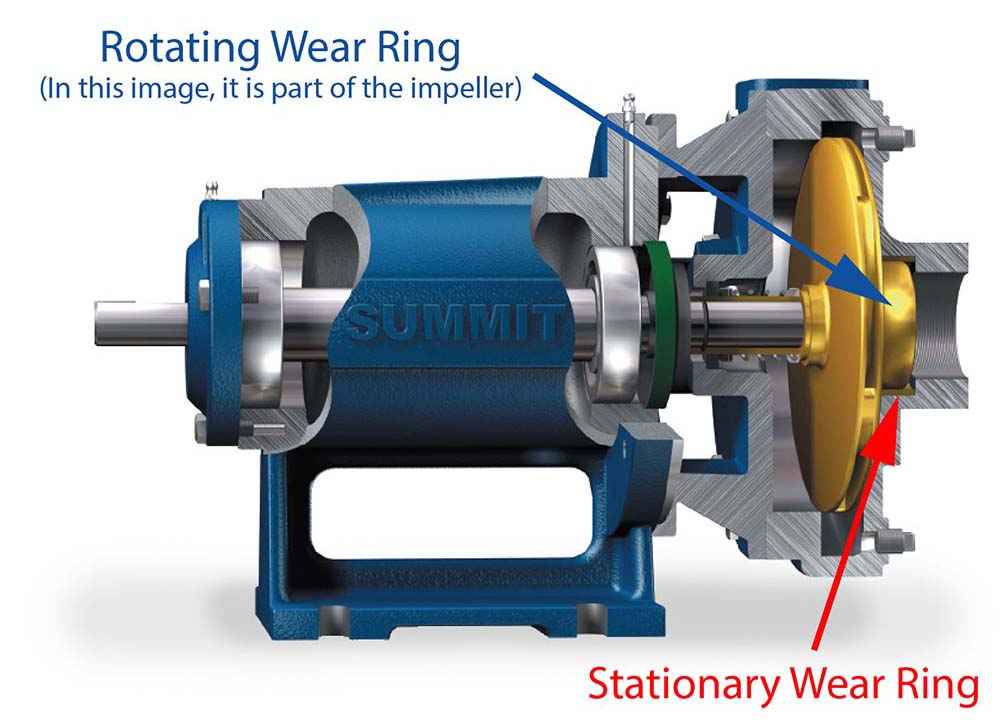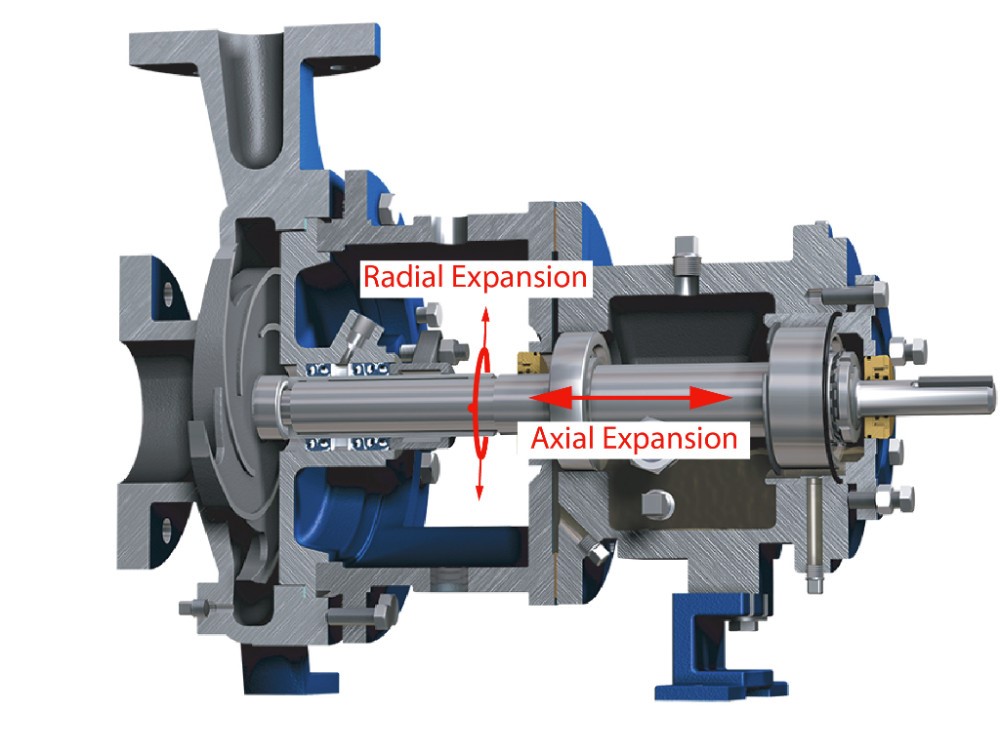The Rub with Wear Rings
Pumps with enclosed impellers normally have Casing and/or Impeller Wear
Rings, which are sometimes replaceable. Replaceable Wear Rings are usually an earmark of a more expensive pump style, and/or meets a higher specification, such as API 610. Material selection for the pump Wear Rings, and the proper clearances can make a big difference in the overall pump operation and reliability.
As a guideline, when specific OEM information is not available, choose the materials compatible for the specific service, and make sure that there is a difference of at least 50 Brinell Hardness between the Wear Ring materials. Most engineers prefer the softer material on the stationary Wear Ring. If the Specific Gravity is less than 1.0, which is usually the case with hydrocarbons, it’s typically recommended to open the running clearances at least a few more thousandths than what the OEM recommends for running on clean ambient temperature water.
(Note: I personally recommend adding 0.003” more clearance for hydrocarbons SG less than 0.85.)
Thermal Growth Impeller Settings
When a stainless steel Shaft increases in temperature, it grows both radially and axially. The rate of growth is about 0.001” per inch of shaft for each 100 degrees F. (0.01 mm per millimeter of shaft length per 50 degrees C rise).
Example: if a Shaft of 1.875 diameter and 20 inches in length was subject to 400 degree Fahrenheit temperatures, it would “grow” 0.080 inches in length and 0.0075 inches in diameter.
This can be enough change to contact the Casing (Volute). This is dependent on the final Impeller Setting and Casing/Impeller materials, as well. We mention this because unless you specify on the Purchase Order, the specific pumping temperature and request the Impeller be set at the appropriate clearance, the impeller will most likely be set at some lesser clearance. My personal philosophy is that the clearance should always be final checked in the field.







